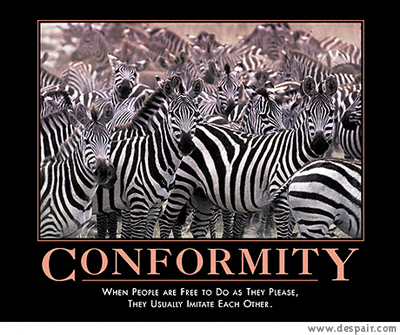Durham, 1996: It was my second year teaching AP Psychology and I was still fumbling around,
 |
| Circa 1996 in my classroom - John is on the left, I'm in the middle |
trying to figure out how to pace the course. Since my creativity to organization ratio is normally 10:1, the classes were fun but not always well structured. I realized this in September when I was reminding the class about a test the following day, and this senior on the front row starts freaking out, looking wildly around the room at this classmates. "Wait, we have a test tomorrow? How did I not know this? Did you know?" His classmates all nodded. "How do I not know what's happening in here?" I remember teasing him about this, but that night I realized that he had a point - the students who were organized could compensate for my chaotic nature, but this student needed more structure.
So I typed out an outline for the next few weeks, with page numbers to read, important topics and quiz/test dates, and the next day in class I proudly handed it to him. "Look, John Cerqueira," I said, "it even has your name on it." It was called the Cerqueira guide, and John beamed proudly, showing it off to his classmates. Of course, every student who saw it wanted one as well, so I made copies for the whole class. It then became a tradition - for every unit we did, the students got a copy of the Cerqueira guide. After John graduated I continued to use the name on the guides, so with every class I got to tell the story of John and taught them how to pronounce the name (sir-KWEHR-uh). Don't say "the guide," don't say "that outline thing," say the Cerqueira guide," I'd tell them.
On September 11, 2001, I was on the 2nd day of a new job. I left teaching after the 1999-200 school year and was a stay at home dad for a year, but I was anxious to get back to work and got a non-teaching job at a school near my house. I found out about the attacks at work and crowded around a TV with my new co-workers as we watched the horrors unfold that morning.
I didn't have any personal connection to 9/11 or so I thought, until the next day when I was
reading the USA Today and spotted a name so distinctive I recognized it immediately. John Cerqueira had gone to NC State University, and after graduation landed a job with a telecommunications company in the World Trade Center. He was in a meeting that morning when the first plane hit the tower above him, and he and the others in his office began to climb down from the 81st floor. (I loved the fact that the USA Today reporter noted that John had been "late as usual" and was carrying his breakfast in hand when he arrived at work!)
When John reached the 68th floor, he and his manager, Michael Benfante, noticed a woman in a wheelchair who was crying because she was unable to descend the stairs. The two men grabbed the emergency chair in the stairwell, helped the woman (Tina Henson) into the chair, and resumed their descent. It took the nearly an hour to descend those stairs. When they reached the lobby, it looked nothing like it had earlier that morning: "The lobby is completely destroyed. Turnstiles blown out near the walls, counters cracked in half, doors off hinges, floor to ceiling plate glass windows broken. What captures my attention the most is the desolate West side highway, the thick coat of what looks like a new fallen snow." This was John's description of that moment that he captured in his book,
Hero Sandwich.
The men watched as rescue workers put Tina into the back of an ambulance, then they turned to look at the building behind them. They saw flames at the top, and saw the figures of people who had thrown themselves from the top of the tower. Suddenly, the tower itself began to disintegrate, and they had to run for their lives to escape the falling debris. They dove under nearby vehicles and were able to avoid being injured.
John and Michael were featured as heroes on Oprah and on Good Morning America and in People Magazine, and each has written a book about the experience (Michael's is
here). Out local TV station has followed John over the years as well and they just aired an update on John for the 10th anniversary. But for me, I'd like to think that John will be remembered in a different way as well. When I returned to teaching AP Psychology in the 2008-09 school year and started to update those old Cerqueira guides, I had a moment when I thought: should I just change the name to a study guide? And then I thought both of John's heroism and his face that day in class, and I thought, no, my students need to know his story. So they continue to be Cerqueira guides, I continue to teach students how to pronounce his name, and I continue to tell the story, starting with "and John, being John, was running late to work that day..."
-- posted by Steve




















